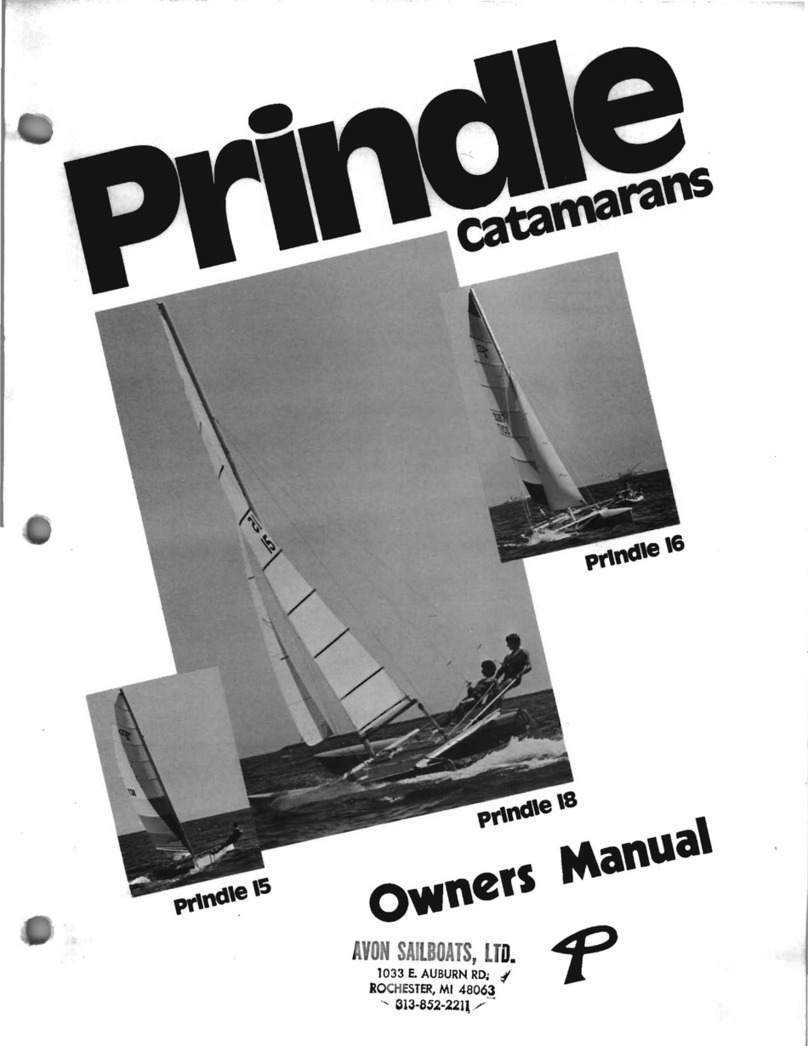PRESSURE
The correct pressure for the buoyancy tube is 170 mb/2.5 PSI.
We recommend that you purchase a pressure indicator from your Dealer. This will permit a quick
and efficient control of the pressure during inflation. Without a pressure indicator, stop inflating
when the foot-pump gets difficult to operate, and the boat is «hard » (you should not be able to
bend the cone ends).
Ambient temperature of air and water Ambient temperature tubes’ internal pressure
have an effect on the boat’s internal +1°C / +1,8°F +4 mb / 0,06 PSI
pressure -1°C / -1,8°F -4 mb / 0,06 PSI
Therefore, it is important to anticipate:
Because of temperature variations (especially when this variation is important between the
beginning and the end of the day, in hot areas) check and adjust the pressure in the inflated
compartments by inflating or deflating. Be sure that pressure remains within the recommended
zone, between 130 mb/2.0 PSI and 200 mb/3,0 PSI.
RISK OF UNDERPRESSURE
EXAMPLE: Your boat is in direct sunlight on the beach (temperature =50°C/122°F) at
recommended pressure (170 mb/2.5 PSI). After putting it in the colder water (temperature
=20°C/68°F), the internal temperature and pressure of the tubes will both drop (up to 85 mb/1.8
PSI) and YOU WILL HAVE TO INFLATE AGAIN until you regain the lost pressure due to the
difference in temperatures. Therefore a loss of pressure at the end of the day, when ambient
temperature drops, is perfectly normal.
NOTE :
Proper inflation is critical to the performance of the boat. It is the pressure in
the tubes that gives your boat the necessary rigidity to perform well. Under-
inflation causes improper flexing of the tubes which will result in stress and
chafe
RISK OF OVERPRESSURE
EXAMPLE: Your boat is inflated to the recommended pressure (170 mb/2.5 PSI) at the
beginning of the day (low ambient temperature =10°C/50°F). Later in the day, your boat is in direct
sunlight on the beach or on a yacht’s deck (temperature =50°C/122°F). Internal temperature of all
inflated compartments can then increase and reach up to 70°C/158°F (especially for dark-coloured
tubes). The consequence will be a doubling of previous pressure (340 mb/5.0 PSI). YOU WILL
THEN HAVE TO DEFLATE until you reach the recommended pressure.
WARNING
WHEN YOUR BOAT IS OVER INFLATED, PRESSURE BECOMES TOO
STRONG FOR THE INFLATABLE STRUCTURE, AND COULD CAUSE A
BREAK IN THE FABRIC ASSEMBLY
IN CASE OF OVERPRESSURE
SEMI-RECESSED VALVE :
Deflate by pressing the spring loaded
button.
8




























